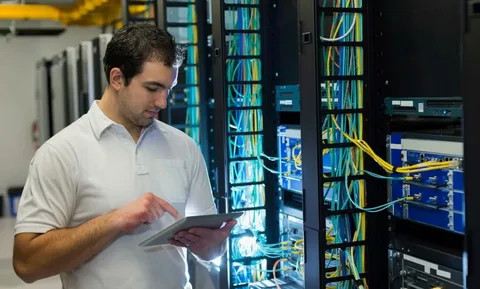Does Electrical Technology Navigate The Currents OF Innovation?
Electrical technology, the rapidly evolving landscape, electrical systems and innovations form the backbone of our modern civilization. From powering our homes to driving industrial machinery, electrical technology plays a pivotal role. This article delves into electrical technology, exploring its historical roots, current advancements, and potential for the future.
1. Historical Evolution:
The journey of electrical technology traces back to the 19th century, with pioneers like Michael Faraday and Thomas Edison laying the foundation. The invention of the electric generator, the development of alternating current (AC) and direct current (DC) systems, and the birth of the first electric power grids marked significant milestones. Understanding this historical context provides insights into the challenges overcome and the rapid progress made in the field.
2. Fundamental Components:
a. Generators and Motors:
The heart of Electrical Technology lies in generators that convert mechanical energy into electrical energy and motors that perform the opposite conversion. These devices are fundamental to various applications, from powering appliances to propelling electric vehicles.
b. Transformers:
These devices facilitate the efficient transmission of electrical energy by altering voltage levels. They are crucial in power distribution networks, ensuring energy travels long distances with minimal loss.
c. Circuits and Electronics:
The realm of circuits and electronics forms the backbone of countless devices. Integrated circuits (ICs), microprocessors, and semiconductor technology have ushered in the era of miniaturization, enabling the development of robust and compact electronic devices.
3. Power Generation and Distribution:
a. Renewable Energy Integration:
The 21st century has seen a surge in renewable energy sources such as solar and wind. Electrical technology is key in harnessing and integrating these sustainable sources into power grids, contributing to the global shift toward clean energy.
b. Smart Grids:
Advanced technologies, including smart meters and sensors, transform traditional power grids into smart ones. These grids enhance efficiency and reliability and enable better management of energy consumption.

4. Automation and Control Systems:
a. Programmable Logic Controllers (PLCs):
Widely used in industrial settings, PLCs automate processes, enhancing efficiency and precision. They find applications in manufacturing, energy production, and various other sectors.
b. Internet of Things (IoT) Integration:
The intersection of electrical technology and IoT has given rise to smart homes and cities, where interconnected devices optimize energy usage, improve safety, and enhance overall quality of life.
5. Emerging Technologies and Future Prospects:
a. Energy Storage:
Advancements in battery technology are crucial for storing and utilizing electrical energy efficiently. Innovations in this area affect electric vehicles, portable electronics, and grid-scale energy storage.
b. Artificial Intelligence (AI) in Electrical Systems:
AI is increasingly integrated into electrical technology for predictive maintenance, fault detection, and optimizing energy consumption.
c. Quantum Computing:
The potential of quantum computing holds promise for solving complex electrical engineering problems, optimizing power systems, and simulating intricate scenarios.
FAQS
Q1. What is electrical technology, and how does it differ from electrical engineering?
A: Electrical technology encompasses the practical applications of electrical principles in various fields, focusing on implementing and using electrical systems and devices.
Q2. How has electrical technology evolved?
A: The evolution of electrical technology dates back to the 19th century, with milestones such as the invention of the electric generator, the development of power grids, and the introduction of alternating current (AC) and direct current (DC) systems. The field has continued to evolve, incorporating advancements in renewable energy, smart grids, and automation.
Q3. How does technology contribute to renewable energy integration?
A: Electrical technology is crucial in harnessing energy from renewable sources such as solar and wind. It involves the design of systems that efficiently capture, store and distribute renewable energy, contributing to the global shift towards sustainable power generation.
Q4. What is the significance of smart grids in technology?
A: Smart grids leverage advanced technologies, including sensors and communication systems, to enhance the efficiency and reliability of power distribution. They enable better management of energy consumption, reduce downtime, and support the integration of renewable energy sources.
Q5. What role does technology play in home automation and the Internet of Things (IoT)?
A: Electrical technology forms the backbone of home automation and IoT, enabling the creation of smart homes and cities.
Q6. How is quantum computing relevant to electrical technology?
A: Quantum computing holds promise for solving complex electrical engineering problems, optimizing power systems, and simulating intricate scenarios.
Q7. What are the prospects and challenges in electrical technology?
A: The future of technology will likely involve continued advancements in energy efficiency, integration of emerging technologies, and addressing challenges such as cybersecurity in interconnected systems.
Conclusion:
As we stand at the intersection of tradition and innovation, technology continues to shape the world around us. From powering our daily lives to steering the trajectory of our global energy landscape, the journey of technology is a testament to human ingenuity. Embracing and understanding these advancements is critical to navigating the currents of innovation that propel us into an electrifying future.






